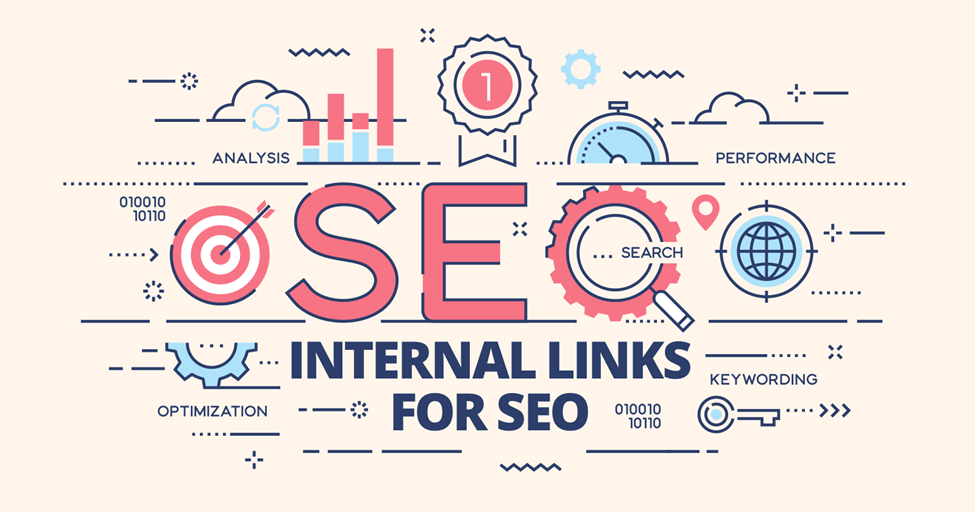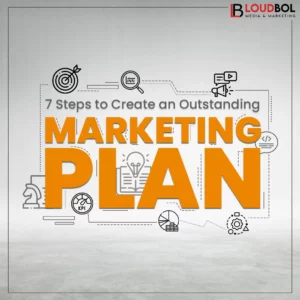Businesses boost their products and services online with the help of a search engine.
But how?

Search engine optimization Or SEO offers various elements that keep businesses up to date with a significant requirement.
With the help of SEO, businesses get done the significant requirements of products or services that assist them to stand out in the market.
Businesses may use different content or posts that make the audience stop.
But, when you post on various topics, how can google connect your content and give Google an idea of the structure of your website?
So, there you go with internal links,
Internal links are hyperlinks that point to pages on the same domain. They differ from external links, which link to pages on other domains. Internal links are important for SEO because they help Google find, index, and understand your site’s pages. They also help establish an information hierarchy for the website and spread link equity (ranking power) around websites.

Internal links can send page authority (or PageRank) to important pages, which is key for any site that wants higher rankings in Google. An internal link is any link from one page on your website to another page on your website. Both users and search engines use links to find content on your website. Users use links to navigate through your site and find the content they want to find, while search engines use links to understand your site’s structure.
Understand the Different Types of Internal Links
Internal links can be created using several elements, including internal links in the text, main navigation, footer links, and more.
Here are some types of internal links:
Contextual links: These are links within the body of a page that are relevant to the content on that page.

Navigation links: These links in the main navigation menu help users navigate to different sections of your site.
Footer links: These are links in the footer of your site that provide additional navigation options.

Breadcrumb links: These links show users the path to a particular page on your site.

Anchor text links: These are links within the text of a page that use relevant anchor text to link to other pages on your site.
Using a variety of internal link types can help establish an information hierarchy for your website and spread link equity around websites. However, using internal links strategically is essential to signal that one page is related to another.
By doing so, you can help search engines understand your site’s structure and pass authority between pages
How do internal links help in SEO?
Internal links are essential for SEO because they help search engines understand your site’s structure, pass authority, and allow users navigate it. Here are some benefits of internal linking:
- They establish a web of connections between content related to a specific topic, helping your audience discover related content.
- Internal links can send page authority (or PageRank) to important pages, which is key for any site that wants higher google rankings.
- Internal links assist Google find, index, and recognize all of the pages on your website.
- They help establish an information hierarchy for the website and spread link equity (ranking power) around websites.
- Also, improve navigation for both search engines and users.
- They offer eliminate broken links and redirect loops while building site authority.
- It’s important to use internal links strategically so that one page is related to another.
Here are some steps to build your internal linking strategy:

Create lots of content: To create many internal links, you must have many internal pages. So, the first step to a killer internal linking strategy is to have a killer content marketing strategy.
Prioritize your internal links: A strategic use of internal links ensures that your link equity spreads to strategic spots within your site and the rising tide begins to lift all boats.
Point internal links from traffic to conversion pages: This internal linking strategy works well for companies that run a blog to create engagements.
Ensure that links are contextual: The primary purpose of an internal linking strategy is to offer a better user experience; all the other advantages come later. Google prefers websites that strive to provide a good user experience.
Use follow links: Follow links are the best way to build out the internal link architecture of your website.
Link to relevant content: As much as possible, link to relevant content in your internal linking.
Use various internal link types: Using a variety of internal link types can help establish an information hierarchy for your website and spread link equity around websites.
By following these steps, you can improve the internal linking structure of your site and help search engines understand your site’s structure and pass authority between pages.
Prioritizing Your Internal Links
A systematic use of internal connections ensures that your link equity extends to key areas of your site, and the rising tide begins to lift all boats.
Like so many other SEO subjects, exploring the nature and function of internal links may go further. It depends on how much time you have to commit to this topic as a key component of your SEO approach.
You must consider it an important component whenever you create a new page or edit an existing one.
Our SEO services will help you start by creating a more purposeful internal linking strategy.
Conclusion
Internal links are small but significant components of your entire SEO strategy. Here’s a quick overview of the significance of internal linking:
- Enhance the user experience
- Improve engagement metrics
- Drive users toward conversion
- Build your website architecture
- Improve crawl efficiency
- Build your link equity
- Tell Google which keyword you want to rank




Hey very nice website!! Man .. Excellent .. Amazing .. I will bookmark your web site and take the feeds also?KI’m glad to search out so many useful info here within the publish, we want work out more strategies in this regard, thanks for sharing. . . . . .
Hello! Someone in my Facebook group shared this website with us, so I came to give it a look. I’m enjoying the information. I’m bookmarking and will be tweeting this to my followers! Wonderful blog and amazing design and style.
Thanks for this insightful information. It really helped me understand the topic better. Nice!